Einleitung
Diese Anleitung zeigt dir, wie du die Festplatte austauschen oder aufrüsten kannst.
Werkzeuge
Ersatzteile
-
-
Lege den iMac mit der Vorderseite nach unten auf einen Tisch, so dass die Unterkante zu dir zeigt.
-
Löse die einzelne Kreuzschlitzschraube in der Mitte der Abdeckung.
-
Entferne die Abdeckung vom iMac.
-
-
-
Entferne folgende zwölf Torx Schrauben, welche die Frontblende am Rückgehäuse befestigen:
-
Acht 13 mm T8 Schrauben
-
Vier 25 mm T8 Schrauben
-
-
-
Hebe die Frontblende vorsichtig vom oberen Rand her aus dem Gehäuse.
-
Wenn der obere Rand frei ist, kannst du die Frontblende zum Fuß hin kippen und aus dem Gehäuse heben.
-
Drehe die Frobtblende weg vom restlichen Gerät und lege sie über die Oberkante des iMac.
-
-
-
Entferne die beiden 5,3 mm Torx T6 Schrauben vom LCD Stecker.
-
Greife fest die Zuglasche oben am Stecker und ziehe ihn gerade aus seinem Anschluss.
-
-
-
Fasse die Unterkante des Displays an beiden Seiten mit den Händen an und hebe es soweit hoch, das du an die Stecker gelangst.
-
Halte das Display mit einer Hand hoch; lokalisiere und löse das Kabel des Display-Thermosensors aus seinem Stecker.
-
-
-
Halte das Display weiter hoch und drücke den Stecker des Stromversorgungskabels fest mit zwei Fingern nach unten aus seinem Sockel.
-
-
-
Um die Halterung der Festplatte zu entfernen, musst du das Mittelteil gegen die Seite der Festplatte drücken und gleichzeitig die obere linke Kante zu dir drehen.
-
Wenn die linke Kante frei ist, musst du die Halterung zur rechten Kante der Festplatte hindrehen.
-
Hebe die Halterung der Festplatte gerade aus dem Gestell heraus.
-
-
-
Entferne, falls vorhanden, das kleine Stückchen Klebeband, welches die Kabel zu den Thermosensoren der Festplatte und des optischen Laufwerks bedeckt.
-
-
-
Ziehe das Kabel zum Thermosensor der Festplatte gerade aus seinem Sockel auf dem Logic Board.
-
-
-
Drehe die Oberkante des Laufwerks zu dir , hebe dann die Festplatte gerade aus den unteren Stiften.
-
-
-
Setze das flache Ende des Spudgers zwischen SATA Datenkabel und der Kante der Festplatte.
-
Verdrehe den Spudger, um das SATA Datenkabel von der Festplatte zu trennen.
-
Löse das SATA Datenkabel von der Festplatte.
-
Hebe die Festplatte aus dem iMac heraus. Achte dabei darauf, dass sich das Kabel zum Thermosensor nicht verfängt.
-
-
-
Entferne die beiden Torx T8 Schrauben und die daran befestigen Gummitüllen von der Festplatte.
-
-
-
Entferne die beiden Torx T8 Bolzen an der Seite der Festplatte in der Nähe der Stecker für Datenkabel und Stromversorgung.
-
-
-
Um den Thermosensor der Festplatte zu entfernen, musst du den mittleren Finger der Halterung des Thermosensors mit dem scharfen Ende des Spudgers anheben und gleichzeitig leicht am Kabel zum Thermosensor ziehen.
-
-
-
Hebele die Halterung des Thermosensors der Festplatte mit dem flachen Ende des Spudgers aus der Klebeverbindung zur Festplatte.
-
Um dein Gerät wieder zusammenzusetzen, folge den Schritten in umgekehrter Reihenfolge.
15 Kommentare
Exellent instructions....
I just installed a new HD on my iMac 8,1. Intalled the OS from original disc, it was 10.5.2, I don't know how to upgrade the OS.
I did software update, but only got 10.5.8. ¿what can I do? I would like to install Yosemite at least...
Any help?
Dan N. -
You need to get to 10.6.8 via physical media, then app store update from there. I have read that Apple will send you a dvd for no cost, but the official price is $19.
Compatibilité du capteur thermique avec un SSD ?
DUBOIS -
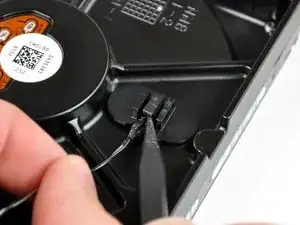
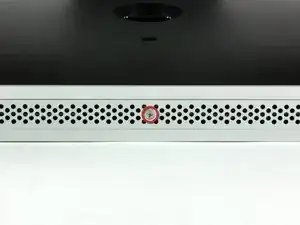
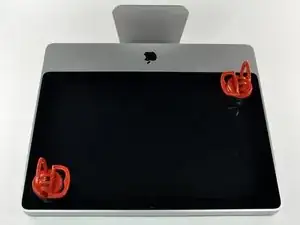
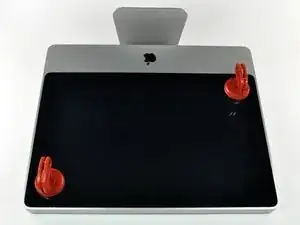
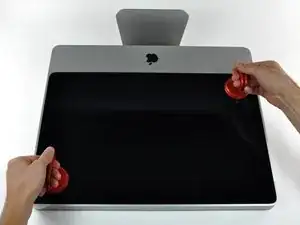
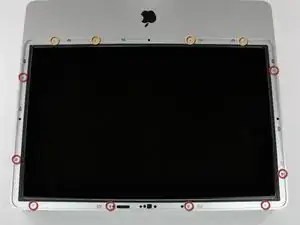
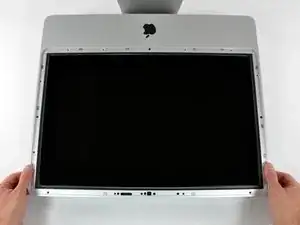
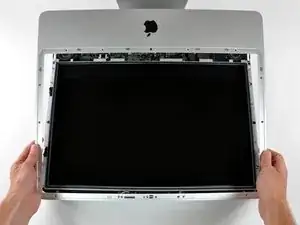
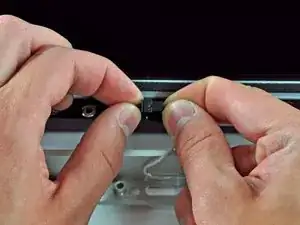
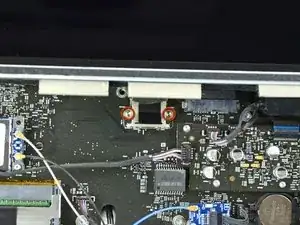
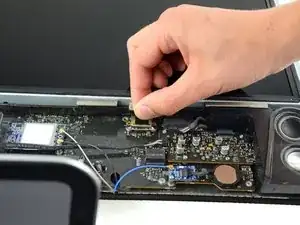
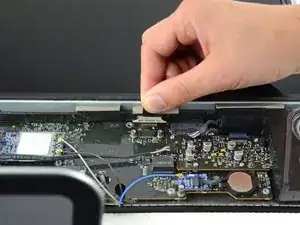
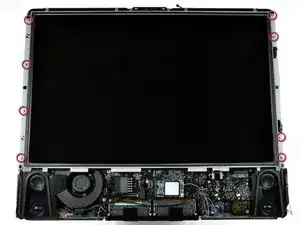
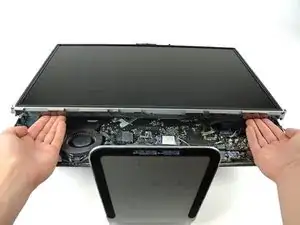
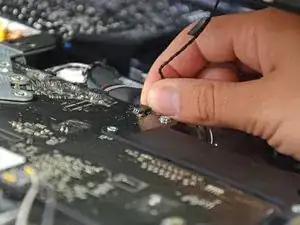
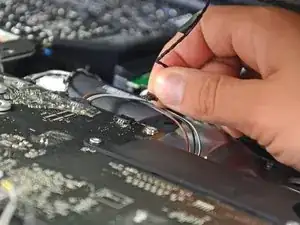
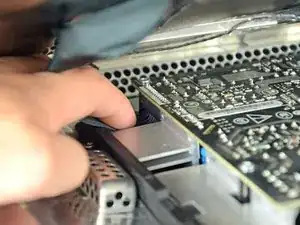
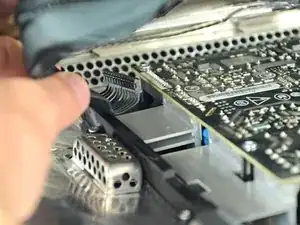
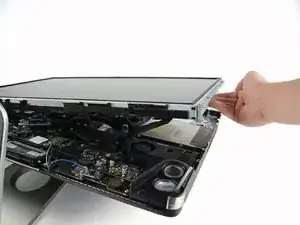
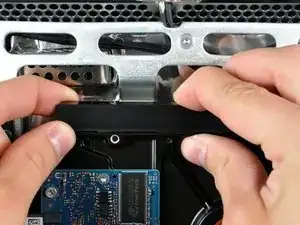
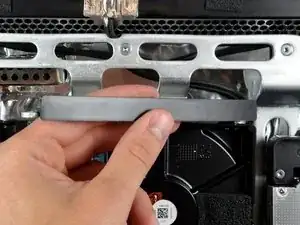
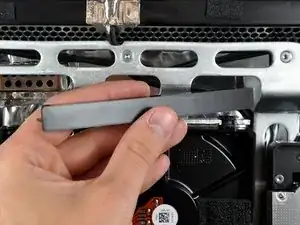
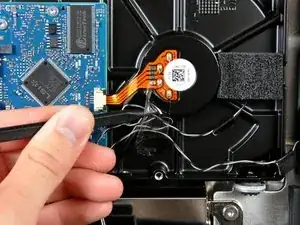
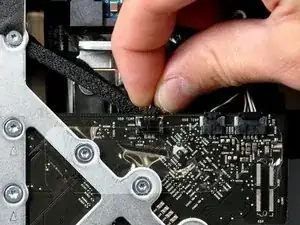
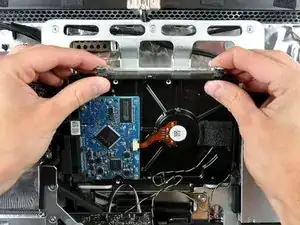
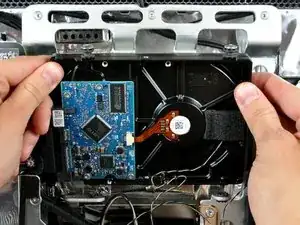
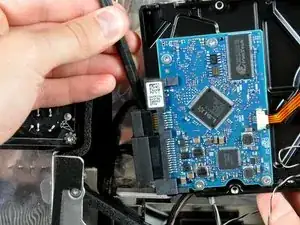
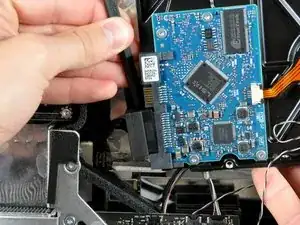
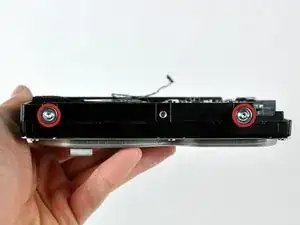
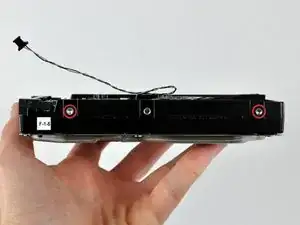
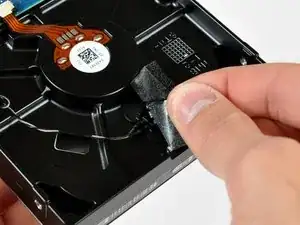
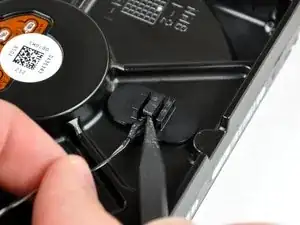
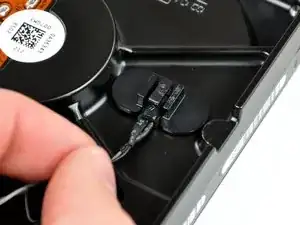
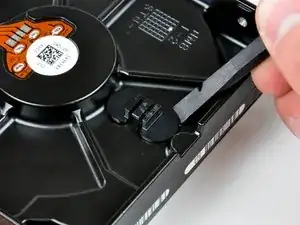
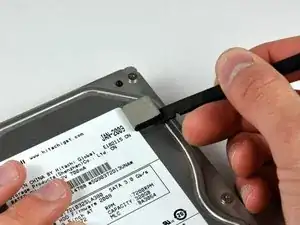

The grid won't fall off by itself. You'll have to help it. Use the smallest screwdriver you have; the Torx 6 worked fine for me. It should enter in one of the many holes composing the grid. Use it as a lever to ploy the grid a little bit. You may catch it with your fingers and that's it.
Be carefull not to damage the hole by a too strong leverage.
Laurent -
much more safer to use duct tape, instead of torx 6. (glue it along the length of the grid and pull). it will loose instantly and smooth;)
Hofmann78rus -
Anyone know a guide to replace the plastic piece this screw connects to? I accidentally forgot this step - went to remove the front bezel and bent the plastic piece the access door connects to.
Jason Augustin -